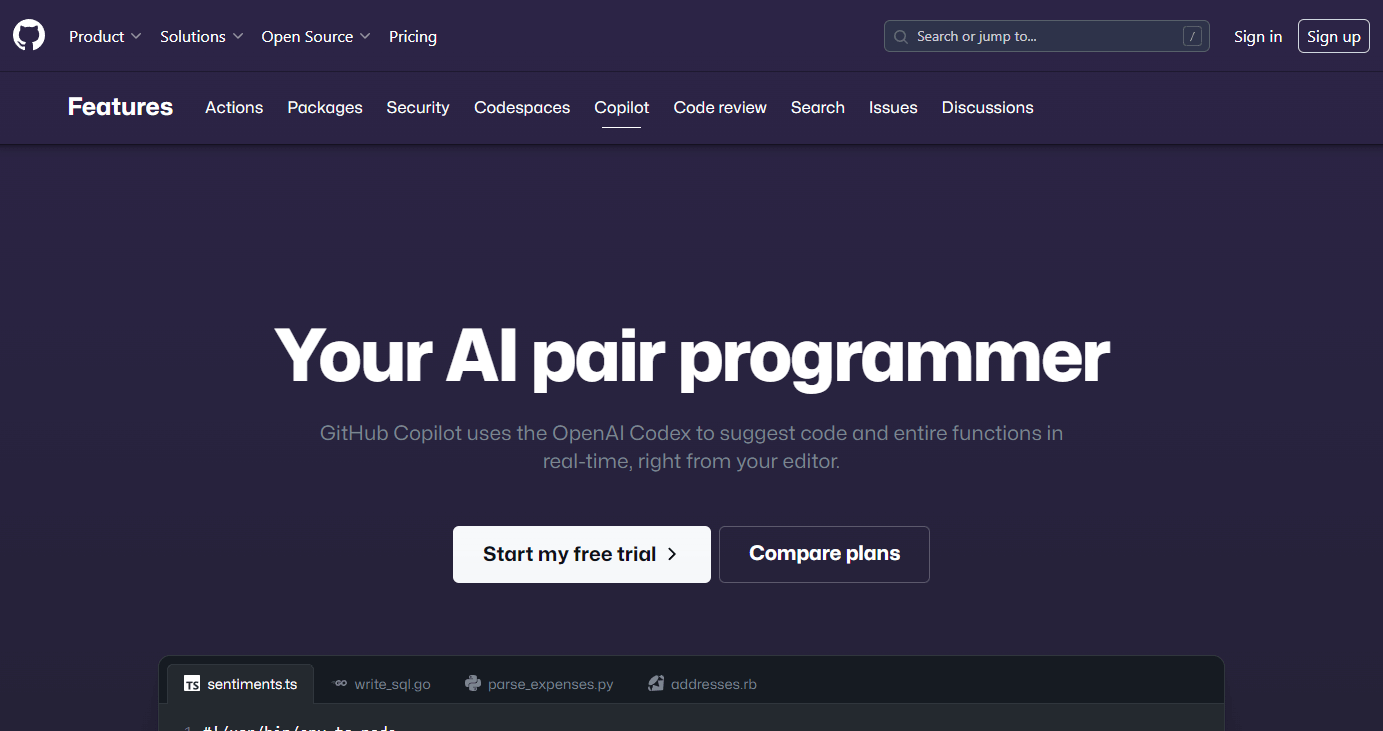
AI Tools for Web Development: Insights From the Team
Artificial Intelligence (AI) is taking the world by storm. Spurred on by our AI workshop at the summer company gathering, the team decided to share some of the AI tools we’ve been testing out recently.
We have been exploring how AI tools such as ChatGPT can help with Search Engine Optimisation (SEO), for example creating customised templates, doing competitor research, and content creation for social media to increase visibility on particular platforms such as LinkedIn.
Alex, for example, has been testing the OpenAI API with GPT-3.5 and GPT-4 to rewrite product descriptions to make them unique for SEO. The same tool generates a summary from the product description to be used for the page meta description. Each time the content is re-written, it keeps a note of the GPT version and the “prompt” used by Alex to create the content. With enough content, it’s then possible to use analytics to compare the search results ranking of AI generated content (and the specific API version and prompt used) versus human generated text.
Will and Tim have been using AI in digital marketing to help with generating keyword ideas through the use of Google suggestions and Bing AI. They start by taking Google Suggestions, which are based on frequently asked questions that people search for related to the term in question, for example in relation to ‘AI tools’:
Then they ask Bing AI to suggest some keywords for these Google suggestions and put the queries and keywords into a table.
“The suggestions from Bing AI prompts are useful”, says Will, “as they give us a better idea of what terms are being used across different industries, such as destinations, retail, leisure etc., and give us inspiration for other potentially relevant keyword terms and queries we can create.
“We then use keyword research tools such as Semrush and Google Ads Keyword Planner for these suggested terms to further investigate the traffic, Cost Per Click & search volume of the suggested terms.”

CoPilot is an AI tool that assists in writing code. Within the development team we’ve been using it to help with code completion and code suggestions, which has helped with productivity. The results vary, but it is easy to ignore it if it gives you an incorrect result.
Michael explains: “Essentially, as you are writing code it will give you suggestions; sometimes it may just be a single line, sometimes it will give you a complete section of code consisting of 20-30 lines.
“The nice thing about this tool is that it integrates in most code editors directly, so you don’t have to keep copying and pasting between your browser and code editor when using an online tool to generate code. It also reads sections of your code and suggests solutions based on your existing codebase.
“The best description is that it is like a really advanced autocomplete. This is a far stretch from writing all your code for you, but it helps in smaller ways by suggesting partial solutions that can be modified to get the result you are after.”

The eye-catchingly named This Person Does Not Exist is an AI tool that generates an image of a random human face of a person who is not real. Michael uses the tool when he is developing website content, inputting the images of people that it generates as placeholders while he is waiting for actual content.
“I like using these images because if they did somehow slip into a production project, or if something from a staging site did somehow become publicly accessible we don’t need to worry about repercussions, since they don’t exist.”
AI image generators are getting more and more sophisticated. They could be helpful in automatically generating featured images for blog articles based on the article title or excerpt text.
PrivateGPT (or PrivateLLM) is the equivalent of ChatGPT but customised for the use of a specific organisation. Public large language models (LLMs) like ChatGPT and Google Bard, which are developed to have as much general knowledge as possible, have a lot of concerns around data leakage and answers that are irrelevant or incorrect because the data they are trained on is often of low quality. PrivateGPT, on the other hand, possesses specific knowledge and information for the users of the organisation.
We discussed this in a recent development meeting and Moz has been tasked to get a PrivateGPT setup for Infotex. We’d create and host our own language model (based on the open source project), which would be trained on our codebases and our internal ticket mangement system and CRM, the result of which would only be accessible to Infotex staff.
“We’re not sure how far this could go, but it’s conceivable that it could result in our CRM making suggestions of how to resolve an issue, or highlight where the same thing has been done before for other clients both in terms of support calls or new project stories. It could potentially even point our developers in the direction of where existing code can be found that we’re already using to resolve a similar need.” – Moz
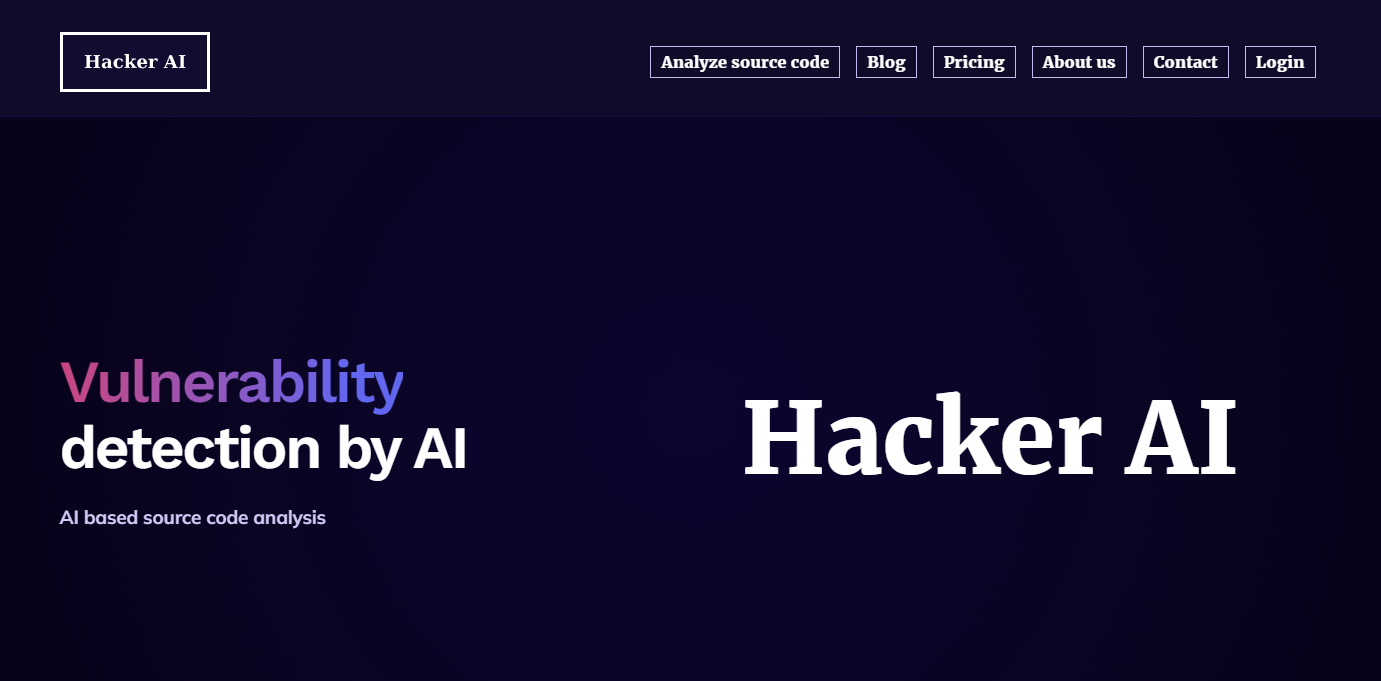
Hacker AI identifies potential security vulnerabilities in source code that may increase risk of exploitation by hackers. We ran a recently onboarded client site through this and it reported one potential security weakness, but we traced this and it wasn’t actually a problem. Hacker AI missed a more obvious problem that Richard happened to spot during our manual review of the site.
“The actual findings were a little disappointing and largely similar to static code analysis tools, which have been around for a while, so at present we’re watching but not moving forward on this one” – Moz
Hexowatch monitors a website to alert you of any changes that occur, to save having to manually monitor a website, which can be time consuming. They offer another similar tool, Hexometer, which monitors the health of a website.
Both of these claim to be using AI yet there is minimal indication of AI actually being a significant part of what they are doing. It’s possible AI is used as a commercial tool to bump the price of their services up. Matt and Moz concluded that the offering wasn’t particularly unique or worthy which is a pity as they initially looked promising.
AI is rapidly developing – Jono suggests that one area to keep an eye on that could be really interesting is AI Avatar videos, such as The Digital People Platform. You can select an Avatar and then give it a script and it will read it out.
Katie has signed up to ‘There’s An AI For That’ to keep up to date via their regular newsletters about new AI tools.
The way AI develops now will shape our future drastically. In light of this, Ollie, our Digital Marketing Executive, has been researching the importance of using and developing AI in an ethical way, and the challenges this brings. Some resources you can read to learn more about the ethics of AI include GCHQ: The Ethics of Artificial Intelligence and the GOV.UK website Ethics and AI Guidance.
Ollie is also reading Scary Smart, written by the former CEO of Google, Mo Gawdat, about the actions we can take to ensure that the AI of the future is sustainable.
Often we’ll hear people describe their Excel spreadsheets as ‘databases’. Whilst an Excel spreadsheet can contain a treasure trove of vital information for a business, it isn’t, strictly speaking, a database.
As a system developer when someone says ‘databases’ to me, I think of them as a tool to organise data in a structured way that can protect it from inadvertent updates and deletions and make the data in it available to the right people in the right place at the right time.
A relational database allows data to be stored in one place but referenced in many others. As a simple example, there can be a list of customers in one table, and can then link one of those customers to a table of orders, and also to a table containing a contact history with that customer, so if we need to update anything for a customer we update it once and everything related will see that update.

Almost all the systems I work with are built using Microsoft SQL Server as a database (Gareth works in our Systems team, dealing with bespoke applications for the health sector). I’ve been working with SQL Server (pronounced ‘sequel’) since the year 2000. In those days I was taken into a freezing cold air-conditioned server room and told that the big box in the corner, which looked like a larger version of the PC on my desk albeit with a built-in tape deck for backup purposes, was the SQL Server. Even back then, we’d rarely interact physically with the machine itself, instead using tools on our own computers that could connect to it to get data from it or to write programs that inserted and worked with the data on it.
I learnt about how you could take backups of the data in your database as frequently as you wanted, and about a thing called a ‘transaction log’ which recorded everything that was updated in the database. You could even use it to almost go back in time to see what the database looked like prior to a change. I also learned that SQL Server could use things called indexes, a subset of your data that could be used to show things on screen or in reports much more quickly than you could do it if you were getting all of the data.

The systems we were building became more and more complicated and as they contained health related data we learnt how to encrypt data within the database so it was only accessible to people with the correct permissions level. With hundreds of users accessing data at the same time, all wanting instant responses we identified ways of getting data out of SQL Server as quickly as possible.
Nowadays there are many different ways of using SQL Server. Dedicated physical servers are less common with the flexibility offered by virtual servers and even cloud based servers meaning it is possible to have SQL Servers in different locations, even different continents, that synchronise data between them, making globally connected systems easy to implement. Microsoft’s Azure services involve a product called SQL Database with the ability to scale up the processing power available to it as a system grows. Microsoft take care of managing the availability of the database, and as developers we can concentrate on getting your system running as fast as possible.
So if you’re using Excel as a database or have spreadsheets that are becoming unmanageable, get in touch and we’ll help you to secure that important business data.
Our summer gathering took place last week, back in Suffolk again. It felt like the Spring Gathering had been the day before, but when we paused to consider, we found that a lot had been going on in the world, and in our world.
Early in June I attended a conference in London hosted by GYDA, who provide strategic advice to digital agencies. With the CEO’s of about 100 digital agencies and 30 or so associated professionals, the talks and workshops were all about the state of the market and what you, our clients, are going to need from us, in the context of two increasingly urgent areas of change – Global Warming and Artificial Intelligence. The day was spent focussed largely on these two themes and we learned some useful facts and some of the latest thinking on how to adapt our businesses in response.
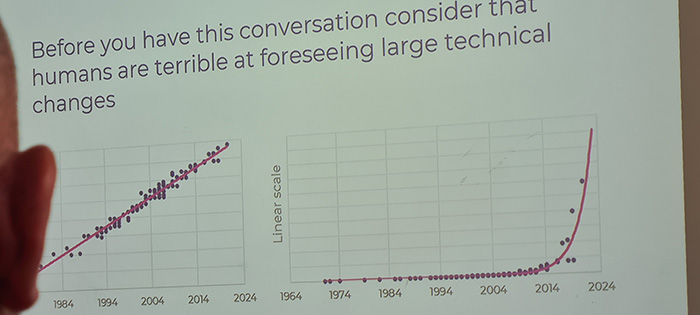
I returned to Suffolk with a strong sense of the need for us to focus on our priorities with more energy. Talking to the team, as time was limited ahead of the summer gathering, we decided to prioritise AI, as it is a natural extension to the productivity workshop we held in our Spring Gathering, dubbed Project Dylan.
Meanwhile we have contacted a specialist Carbon Measurement consultancy to commission a carbon audit. This will establish how well we are doing towards our ambitions to reduce and eradicate carbon emissions, so that we can pick up on this in our Autumn Gathering to take further action, and nurture our connection with start up agency GreenPixie.
So, in our gathering, we engaged at short notice some outside assistance in the shape of Neil Collard, who had presented at the GYDA conference. A consultant with extensive knowledge and experience in how agencies are adapting to ways that AI is already shaping how they work, Neil has kindly agreed work with Infotex as our catalyst for action.
Neil raised some provocative points about what impact AI could mean in the next 12 months and beyond, and his presentation sparked lively discussion (exactly as he had intended) and aided our understanding on the opportunities it presents. Neil tasked us to actively seek opportunities where AI can augment our work, and fuelled our desire for continuous learning to stay abreast of the latest advances so that we can fulfil our purpose, which is to guide our clients.
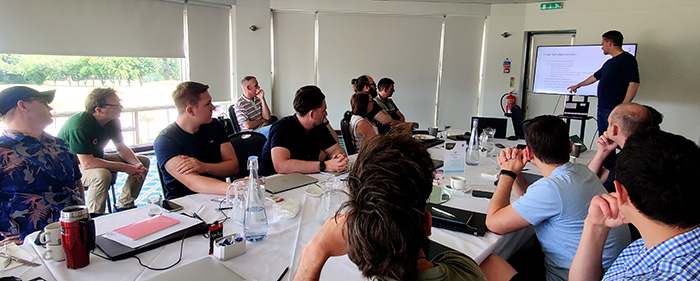
One group session saw us reviewing AI tools that we could start using straight-away to help us in our day to day work. These varied widely, from the well-known ChatGPT, to lesser known tools that would aid our DevOps team in monitoring and maintaining website performance.
The meeting was an opportunity for us to collaborate, brainstorm, and push the boundaries of AI applications within Infotex’s business landscape.
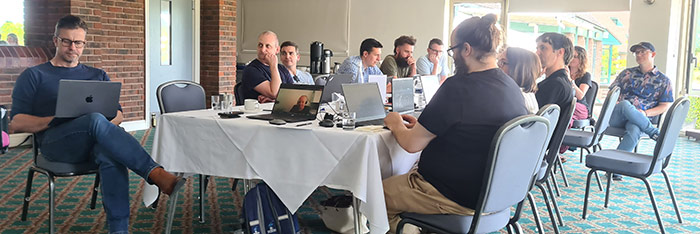
The sun was shining Friday morning, and it saw us take to the mini-golf course at Ufford Park. The Congo Rapids course starts with a self-propelled raft across a raging river to the first hole. The course is heavily themed with animated dinosaurs, a volcano and even a crashed plane.
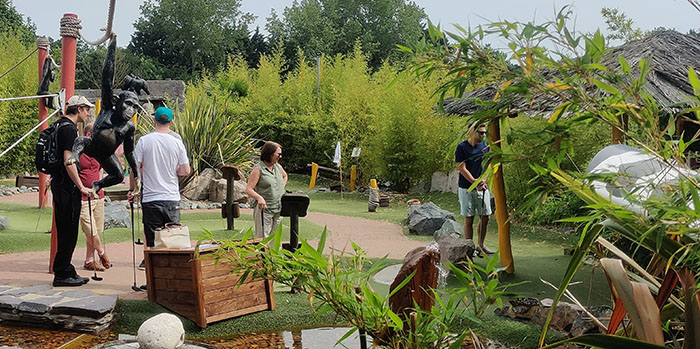
There were holes-in-one a-plenty, as well as some higher scores, but thankfully individual holes are capped at a maximum of 6 strokes. Overall winner was Gareth, scoring an impressive 50 over the 18 holes.
With our clubs put away, we were welcomed aboard HMS Vale’s Deben Café for a team lunch. This refitted former Swedish Navy missile attack craft now serves food and drink moored on banks of the river Deben in Melton. AI talk continued over our food, and the afternoon session saw furthering discussions on our ongoing efforts towards improving website speed and performance.
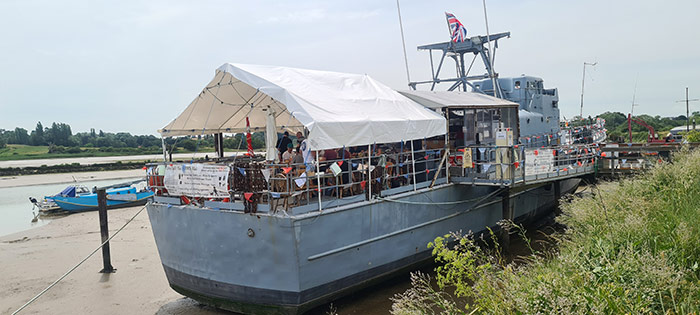
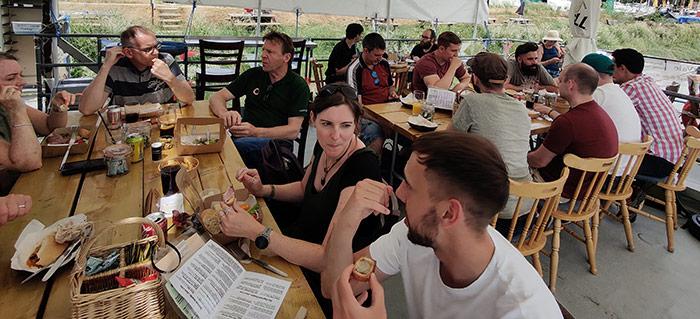
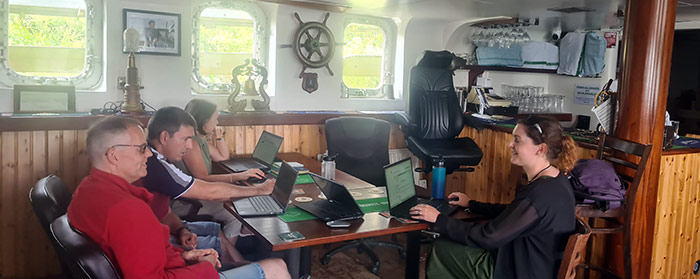
Greenpixie provides cloud emissions data to help companies take control of their carbon footprint, reduce spending, and lower their emissions.
We spoke to the CEO of the company, former Infotex employee John Ridd, to find out a bit more about his journey, cloud computing emissions, and Greenpixie’s mission to help reduce them.

It would have been about two years ago from ideation when me and my co-founder, Will, CTO of the company, had the idea during a hackathon. We had heard about digital emissions making up over 2% of global emissions, which was more than that of the entire aviation industry.
We felt that there was a real business opportunity to quantify this issue and perhaps reduce it using the scalability of digital and the availability of data for this particular sustainability issue.
We created an MVP (Minimum Viable Product) and first focused on websites: we came up with a way to quickly estimate the emissions of our website homepage, which we sent out via email marketing and got a lot of responses – we thought, we’re onto something here! That started our journey into digital sustainability. It just so happened we didn’t end up doing websites, but cloud computing emissions, however the principles that we started with remained the same: a scalable way to measure and reduce digital emissions.
By 2030, digital emissions are predicted to be over 10% of global emissions due to continuing demand for data. A large amount of these digital emissions is cloud computing, but also the internet itself; Chat GPT, streaming services – it all ends up with data centres, which suck up an incredible amount of electricity. A lot of metals and rare minerals are used to create all this hardware server equipment and continually replenish it – I think the average lifespan of a server in a data centre for cloud computing is only about four years. A recent Telegraph article refers to data centres outside of London as ‘energy vampires’ because of their electricity usage impacting residential build plans.
It’s a combination of those two things, the huge amount of electricity used, and the materials and minerals needed. There’s also a third dimension, which is water usage. Data centres take in a colossal amount of water in order to keep things cooled. One example is a data centre in Nevada, which was recently covered in BBC’s Panorama programme a couple of months ago, Is the Cloud Killing the Planet?, which used one billion litres of water a year.
That gives you an idea of how our digital world and cloud computing actually causes a very big sustainability issue.

This problem is really a business and enterprise problem. It’s not going to change from us at home not watching Netflix so much, or reducing our own digital emissions, because that’s a drop in the ocean compared to where the problem lies, which is with businesses and enterprise. So we focus on cloud computing.
Software engineers in companies essentially rent servers from data centres owned by Amazon, Google and Microsoft, such as Microsoft Azure or AWS. Hundreds or even thousands of tons of emissions are created from renting all these servers. Currently, there’s no real way for companies to have reliable cloud computing emissions data. This is due to cloud providers not being transparent enough to ultimately provide this information in a way that is really compliant with regulation due to multi-cloud setups within companies.
Secondly, the big factor, which we focus on, is there’s a large amount of cloud waste in the way that enterprises utilise the cloud. Software engineers over purchase server space when they are building out the tech corporations for companies. This means that 30% of servers that are being turned on, left on and used, don’t need to be. So there’s 30% more emissions which also correlates with a 30% overspend, and the companies are paying.
What GreenPixie does is provide companies with the data needed to comply to the latest regulations. One of the big ones is CSDR coming through the EU, which makes companies responsible for their cloud computing emissions, and falls under Scope 3 (the supply chain) in the ESG framework. Secondly, we enable software engineers to reduce emissions at source: we quantify the emissions that are being wasted and then they can clean up the waste through the way that they’re building out their tech, saving money as they do that.
I would say when it comes to digital emissions, they’re very actionable and very measurable when the right tools are out there. I’m actually very optimistic that we can reduce this ‘10% or more’ figure by 2030.
The truth is doing it for the good of the planet normally doesn’t fly when it comes to business priorities, because everyone has so many other priorities. Leadership teams in companies often need to have successful sustainability initiatives of reducing at source so there needs to be cost incentives, which we provide. We’re optimistic in our own focus that this is going to be adopted and there are going to be a lot of emissions prevented.
As a wider sustainability lens, there’s been a move away from offsetting, because really what that is in practice is companies outsourcing their responsibility. There’s been some high profile greenwashing legislation coming through, which it’s going to stop companies getting away with that. As long as companies are clever in trying to incentivize the enterprises to reduce their emissions, we can get there. Cloud is a really good example of that, I think.
We covered cloud emissions at COP 27 for the first time. And we have a really amazing advisory board that opens up opportunities like this.
There is responsibility when it comes to putting out the best information, but there’s a real network of businesses in industry sustainability at this point. So there’s institutions, such as the SDIA (Sustainable Digital Infrastructure Alliance) who are focusing a lot on the science behind this. There is also open source tooling, Cloud Carbon Footprint, which we’ve built upon and improved to be able to give emissions data. We’re connected into all the information to allow us to be leaders in this space. It’s also become more mainstream now, on BBC One a couple of months ago cloud computing emissions were covered as a top level issue.
There is awareness now, but we were one of the first to build a business around this.
We’re fundraising in order to bring this to market in a very big way, and we’ve already got this data product that brings transparency over the issue and allows software engineers to start acting on it.
So really we want to go down the route of growing out the team. We’ve got six full time currently, but we want to get a lot bigger than that now we’ve brought a product to scale. So hopefully we can be servicing hundreds of company’s cloud emissions in the near future, making enough revenue ourselves and ride the wave of what we’ve built.
Yeah, I have a lot to be thankful for for my time at Infotex. I actually did an interview fairly recently and I spoke about Infotex and about Tim Webster (My First Boss).
Infotex is a very giving company that enables companies like Greenpixie to emerge because of people like Tim. Infotex is generally very generous with their time and has this tech mindset that allows companies like this to be built.
The General Data Protection Regulation came into effect on 25th May 2018. Its goal is to protect the rights of individuals where personal data is being used. It does this by outlining the rights of individuals, requiring a lawful basis for the processing of personal data, and placing expectations on how personal data is managed.
In practice, it can be time-consuming and difficult to adhere to GDPR and it is not always clear how specific scenarios should be interpreted. This sometimes creates a laissez-faire attitude towards it where it can be treated as a box-ticking exercise.
At its heart though GDPR, when implemented correctly, benefits us all. Fundamentally it is about understanding the breadth of the personal data that you are capturing and reviewing its journey from the individual through your business-controlled systems and processes and oftentimes its onward journey to third parties.

Without this process, it’s very easy to fall into a situation where you are capturing personal data without even realising it. Keep in mind that GDPR takes a fairly broad approach to what constitutes personal data (including IP addresses and cookies where they can be utilised to identify an individual). Producing a modern website is complex and this complexity increases all the time. Whilst sometimes functionality is programmed from scratch for a specific website, there are also numerous choices when determining which 3rd party services to utilise or integrate with. Take something simple like an integration with a page-sharing service. Perhaps it utilises some embeddable code to render the icons and facilitate sharing. Innocent enough on the surface but is the script capturing any data? Is any of the data personal? Where is it sent? What happens to that data? How do we request its access/deletion?
Another common example is a contact form to capture a simple message (perhaps a name, contact number, and message). This seems relatively straightforward but there are a number of questions we should be asking such as, do we need all of that data? Where is the message being sent? Is it stored anywhere? Does it get sent via email to an email client? Is that being downloaded and stored? Is it passed on to other departments within your company or travel onward to other 3rd party systems? Would you be able to recover/delete that data if requested?
It’s important to state that GDPR does not stop you from doing these things. It asks you to consider whether you need to do them and, if you do, that you do so responsibly and transparently without infringing on the rights of individuals.
From a business perspective, there is great value in understanding your data:
We owe it to ourselves to carefully consider how we capture, process, and share personal data. We shouldn’t just implement a new service, integration, or tool without first looking at it through a data protection lens. A useful exercise is to consider whether you would be comfortable with your own personal data being processed in that way.
As a final thought, we are entering a world where AI is going to be a part of our everyday lives. AI systems require input in order to respond (either in the form of a question or, as another example, the context around something being analysed such as a piece of code). This input has the very real possibility to contain personal or sensitive data. Where does that personal data go? Who is it shared with? Can it easily be recalled/deleted? These questions do not have easy answers and it remains to be seen how AI will be regulated to provide the same protections currently offered by GDPR.
If you need help understanding your data please get in touch.
Microsoft Azure is a cloud computing platform which launched in February 2010. It is a collection of integrated services for building, deploying and hosting applications and services through a global network of Microsoft managed data centres.
The idea behind cloud computing is that it stops organisations having to have their own data centres or collection of physical servers, which both need to be managed and are very energy inefficient. For example, data centres have to be air conditioned so that the servers don’t overheat.
It is the large-scale equivalent of your Google Drive or Microsoft OneDrive, which stores your files on big servers that you access via an internet connection, instead of on your own computer’s hard drive.
Cloud software runs on a remote server belonging to the company who makes or operates that software, and when you want to use it you access your account online.
During the 1980s – 2000s, Microsoft’s Windows system was the go-to operating system, enabling home PC users and businesses alike to interact with their computers. But with the cloud computing revolution of the late 2000s, competitors like Amazon Web Services (launched in 2006) introduced online services for developers to make new websites and complex applications from one basic framework.
To prevent being left behind, Microsoft launched Azure, a cloud platform for .NET and other developers to interact with. Microsoft has now opened up the Azure environment, adding support for non-Microsoft technologies in order to widen its appeal to all kinds of developers. Microsoft has also built a large number of technologies specifically for the Azure platform.
Compared to on-premises and some traditional hosting providers, Microsoft Azure can help increase efficiency and reduce costs. It is reliable, offering platform uptime guarantees of 99.95% and can be coupled with multi-region failover to further increase reliability.
Microsoft Azure offers a variety of services, including virtual machines, databases, storage, networking, analytics, artificial intelligence & Internet of Things (IoT). Infotex use many of the Azure services as part of our technical toolkit. For example, “WebApps” is used to power some of our web applications coupled to Azure’s cloud based SQL Server database.
If you would like to discuss what would be most suitable for your needs, speak to one of our experts today .
If you’re thinking about how to help your law firm engage with the right people online, there are many adjustments you can make to your website.
A good way to start thinking about how to improve your website is to look at the competition. Using examples from current leading family law websites, here are our top tips for how to get your website working well for you.
Endavour Law Solicitors, who specialise in divorce, drive a large amount of traffic to their site through organic keywords. They rank well for ‘cheap divorce’, which would likely bring them a lot of visitors.
Organic keywords are words and phrases that freely attract visitors to your site through search engine optimisation (SEO). By incorporating relevant organic keywords into the page titles, headings, meta titles and descriptions, and the body text of your general site, you help search engines like Google understand what your website and page is about, making it more likely to rank the pages higher up the search engine results pages (SERPs). Therefore, when someone searches something relevant to your services, they will be more likely to find your site.
Rayden Solicitors, who advise on all aspects of family law, get a significant number of organic traffic through the keyword ‘grandparents rights uk’.
Other widely successful organic search phrases for family law websites are those that include ‘near me’. For example, Sills & Betteridge Solicitors see a large amount of traffic from the search ‘solicitors near me’. Major Family Law Solicitors, too, saw a large amount of traffic from the search ‘Divorce lawyers near me’. For this reason, it’s important to always keep your firm’s location and address updated on search engines, such as by adding your business to Google Maps.
Often websites will drive a lot of their traffic via targeting specific keywords.
While organic keywords serve to optimise your website’s search engine rankings through making it more relevant to users, PPC keywords are different because they require bids in auctions in order to acquire, with popular keywords being more expensive and with a higher CPC (cost-per-click). The advertising law firm will pay a fee whenever someone clicks on an ad that takes them to the website.
This includes Google Ads, which is Google’s pay-per-click solution. Paid search positions through Google Ads help a great deal for certain websites to become visible on the Google results page.
For family law websites, the most popular and expensive keywords include: ‘divorce’, ‘family law solicitors’, ‘divorce solicitors’, ‘family lawyer’, etc.
Stowe Family Law ranks number one in Google ads PPC for ‘family law’, and second in the Search Engine Results Pages (SERPs). Example key terms for Stowe Family Law include: ‘what is cohabiting’, ‘stonewalling’, and ‘divorce solicitors’.
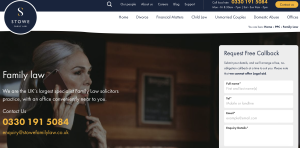
The Endeavour Law Solicitors website ranks as the second Google Ad in the SERP for a ‘family law’ search. Their top paid keywords are ‘divorce’, ‘no win no fee’, and ‘solicitors near me’.
If the website is active and regularly updated with fresh and new content, then Google will notice this and favour it over those that aren’t. FAQs and information blogs are examples of effective ways to keep your content relevant and fresh.
Stephens Scown, who we work with, get traffic to their website through regularly updating the Info Hub on their website with engaging content.
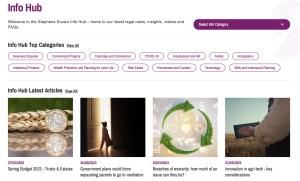
It sounds obvious, but content quality has a major influence on the Google ranking, along with whether the content is relevant or related.
Backlinks and referrals demonstrate to search engines like Google that your website has authority, especially if other high-authority domains are linking to it. It’s an important SEO feature for any website that wants to rank well.
Domain authority is a search engine ranking score developed by Moz.com that describes a website’s relevance for a specific subject area or industry. This relevance has a direct impact on its ranking by search engines.
An example of good user journey is The Family Law Company, another company with whom we’re proud to work.
It is one thing to get users to your website, but you also have to keep them there! Positive user-experience on websites is very important. This includes the website being simple to navigate and browse, which leads to positive reviews and more likely to attract visitors.
This helps user click-through-rate, another very important factor when it comes to SEO ranking as it gives a good indication of the quality of the website, as do other indicators such as bounce rate (the number of visitors that leave after viewing one page).
As the majority of website users are now mobile users, it is imperative that a website is also mobile user friendly, meaning that it is easy to navigate via mobile.
A sitemap helps search engines discover URLs on your site. However, it doesn’t guarantee that all the items in your sitemap will be crawled and indexed. Nonetheless, in most cases, your site will benefit from having a sitemap.
If you have questions on how to optimise your law website, don’t hesitate to get in touch with our team.
About one year ago we said goodbye to our main office. Since then we have more or less thrived on a variety of working from home and using various shared office spaces. We continue to review how well this is working, and, like many businesses, we are learning and adapting as we go.
The quarterly gatherings are now an established thing in Infotex. Like many companies we used to have gatherings before, usually twice a year, but their purpose was different – they were a chance to get out of the office.
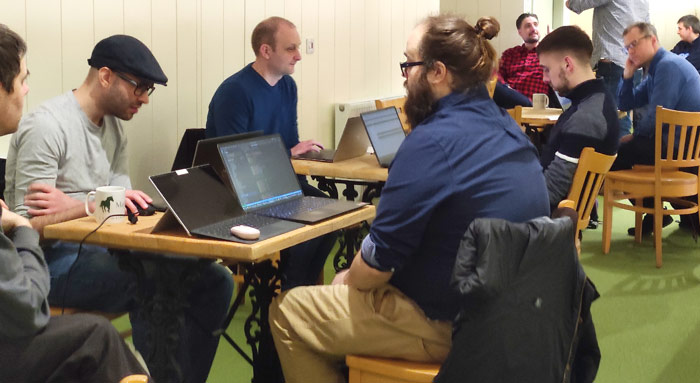
Now our gatherings are an important opportunity for the whole company to spend time together and use it to develop the business. Last week’s gathering was focussed on production. We wanted to bring together the opinions of everyone in the business, the people making and maintaining the websites and the people managing and delivering the services, and coordinate these into actionable ideas.
So we did for ourselves what we have done with our clients so many times over the years, and held a workshop. Our workshop leader on this occasion was Kris Parker, who true to form, made the session all the more engaging with some thoughtful preparation, to get everyone’s minds into problem solving mode. Code named “Project Dylan”, Kris broke down the workshop into two halves – brainstorming and shortlisting ideas.

The “interval” was nicely defined by an evening visit to our good friends at Fishers Gin, who kindly hosted us in their distillery, which is a stunning state-of-the-art facility located on the Aldeburgh beachfront. I have no doubt that the output of our workshop was enhanced by this inspirational interval.
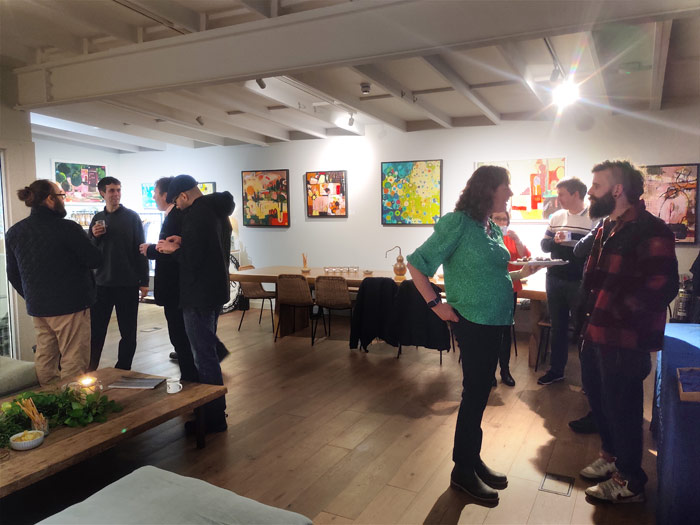
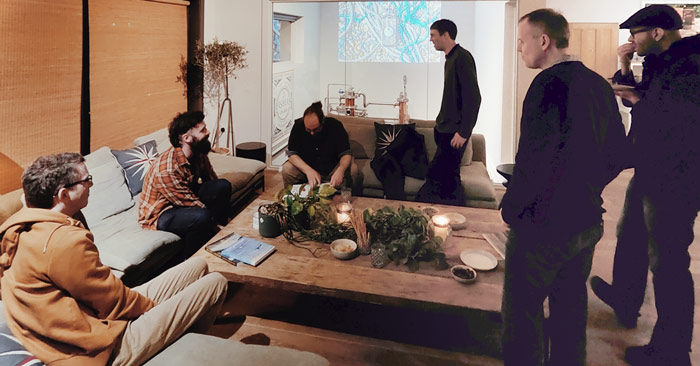
We are lucky to be part of the CSF Group of businesses, which is based alongside Martley Hall Stud. Here we have fantastic modern office facilities, and layers of business support. We were allowed to take over the Equestrian Arena cafe, which proved to be a brilliant workspace with everything we needed, plus some beautiful thoroughbred horses to inspire us.
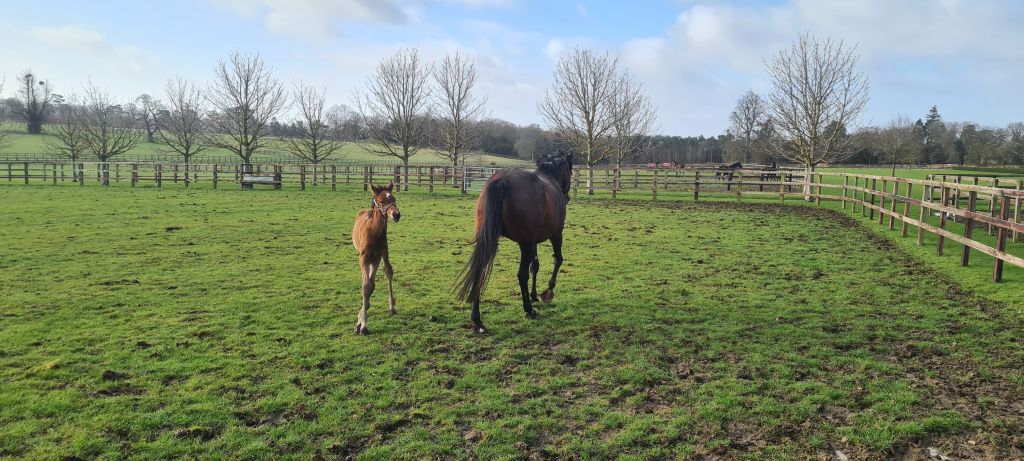
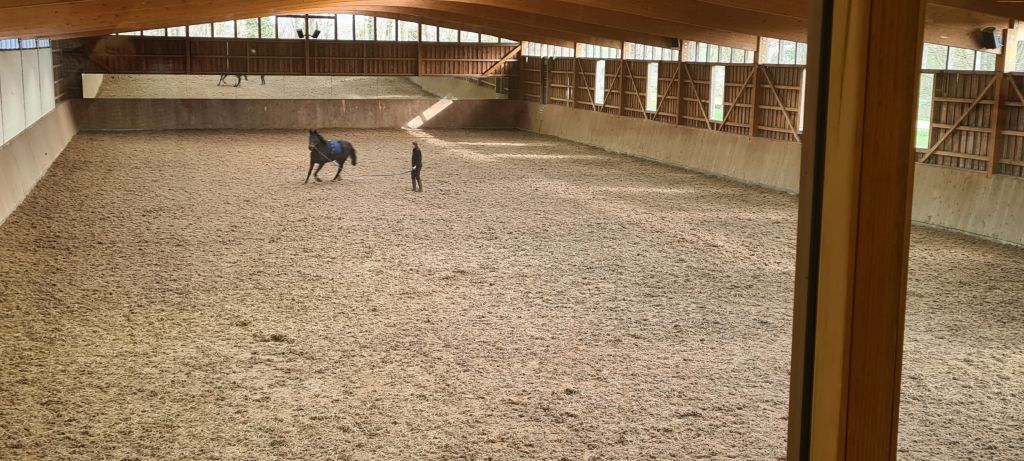
All in all, this latest gathering has been once again unique. We all learned something new, spent valuable time together, and gave serious decisions to development of our production systems in our constantly evolving operating environment.
The UN is celebrating today under the theme ‘DigitALL: Innovation and technology for gender equality’.
The gender gap in digital access, the threat of gender-based online violence, and an underrepresentation of women in STEM education mean women benefit from technology much less than they should.
Yet the digital world can be the key to eliminating gender inequity as technology has the potential to empower women, girls and other marginalized groups.
To celebrate international women’s day, Katie and Debbie give a little insight into themselves and their thoughts on gender equity in tech.

Katie has worked her way up through the company since being an apprentice. As Production Manager, she ensures that we can be confident in our commitments to our clients through proper planning and processes.
What do you think might encourage more women to work in tech?
I think engaging girls from a young age is key, not just in tech but in stereo-typically more ‘boy’ interests such as lego and math, so that they grow up not just thinking that certain jobs are male jobs. I think all children need to realise they really can follow any career that interests them, regardless of gender.
How do you think the tech sector would benefit from an equitable workforce?
I think a more diverse workforce (not just gender) benefits any sector, tech included. The more diverse we are the more we are able to consider an alternative approach. This isn’t just in developing a new solution for a client or creating an amazing design, but right down to our team dynamic and balancing skills. Everyone brings something different to the team and the more diverse our workforce the better we can structure the project team to meet a client’s needs.
What was your dream job as a child?
I never really had a strong desire for a specific career as a child. I loved art and spent most of my free time drawing and painting. I also enjoyed photography and I would often take pictures of animals and wildlife and then come home and draw them. As I got older I became really interested in Psychology and I had considered a career in criminal psychology. I have always been fascinated by the power of our brains – there’s just so much we don’t yet know!
What are you most proud of in your life?
I’m most proud of my growth in self confidence. I was very shy as a child and full of self doubt, when I think about where I am today and all that I’ve achieved both in my career and personal life I think my younger self wouldn’t believe it was possible! I owe a lot of that to running, it has allowed me to push my limits and find out just what I’m capable of – I do most of my best thinking whilst on a run too!

Debbie, Head of Sales, has remarkable experience as a business development manager. We asked her the same questions…
What do you think might encourage more women to work in tech?
Most definitely awareness needs to be raised at young girls through education at school.
How do you think the tech sector would benefit from an equitable workforce?
Each person brings with them different (hard and soft) skill sets; being a diverse workforce will always benefit companies.
What was your dream job as a child?
Forensic Scientist. When I was looking at careers back in the day (1980’s), this was classed as a man’s job.
What are you most proud of in your life?
Watching all my children grow up into loving, intelligent, thoughtful adults with successful careers all whilst being a single working mum with my own successful career.
Read more about gender and technology at www.unwomen.org.
There has been a lot of noise in the media over the last month over the rapid rise of AI tools such as ChatGPT, Google Bard, and Microsoft Bing’s AI enhanced search. AI is nothing new, but ChatGPT reached 1 million users in less than a week and 100 million in under two months.
Basically it’s a chatbot. The tool lets you provide a natural-language prompt or question, and then ChatGPT responds back in natural-sounding language. The bot will use the previous questions / prompts to assist in responding to future questions on the same thread. Surprisingly (or perhaps to avoid the SkyNet of Terminator films), the bot doesn’t use the internet for its response – it’s solely based on the huge data set it has been trained on.
You can request it to answer questions or be creative by writing a poem on a specific topic. Many are using it to write covering letters for job applications, solve maths problems with a step-by-step breakdown of the answer, and write code that goes into websites.
At Infotex we polled the team as to how they’d been using it. So far they have:
ChatGPT isn’t foolproof though, and even ChatGPT’s owners OpenAI note “It’s a mistake to be relying on it for anything important right now. We have lots of work to do on robustness and truthfulness.”
ChatGPT’s rapid rise has prompted Google to expedite their new AI-powered search feature ‘Bard’. This uses natural language processing and machine learning to provide more relevant and insightful information to users.
I don’t expect it to replace the traditional ‘10 blue link results’ in Google but do expect the top section of the results pages to begin including AI-generated responses and answers to questions/queries.
This could be game-changing for search in many ways:
One downside of these generated answers would be fewer clicks on the organic results, which would be frustrating for website owners looking for traffic. As it’s Google, I’d expect to see them protecting their more commercial search terms which would currently be occupied by paid ads. It wouldn’t be too difficult to keep commercial queries (“car insurance”) and general questions (“what is Newton’s third law”) separate.
At the same time, Microsoft is also adding AI-generated answers to its Bing search results. Again, adding AI-generated responses to the search page results.
These are just a few examples of the many applications and uses of ChatGPT. Its versatility and ability to understand and generate human-like responses make it a valuable tool for a wide range of industries and use cases.
Are apprenticeships really a good way of gaining “skills for life”? What opportunities can they give you? Do we recommend them? What are the benefits of hiring an apprentice?
Inspired by these questions, our team share their experiences. From Will, our current apprentice, to Matt, Katie and Kris, whose Infotex journeys began as apprenticeships and finally from our managers Cameron and Ant on what it is like to hire apprentices into the company.

“This apprenticeship has been a great opportunity for me to get both hands on experience in my job role, whilst also getting the benefit of studying in order to complete my qualification.”
Will – Studio Apprentice
I help on the client support desk and with digital marketing alongside studying for my Business Administration qualification. Through this I have learnt the fundamentals of how Infotex operates, as well as specific tasks such as carrying out audits of clients’ websites and examining how to improve their SEO (Search Engine Optimisation) in order to drive visitors and visibility to their site. I am enjoying the apprenticeship because the hands-on experience of working while learning suits me as an individual.
It is challenging as a lot of the work is very technical, so I work closely with Tim for the digital marketing, and Matt for the support desk. They have been excellent for my development and are always available for any questions I have. Cameron, my mentor, has been very important because he makes sure I’m on course regarding both the job role and my coursework for the qualification. The apprenticeship lasts for one year minimum, and I plan to pass at a distinction level this July and hopefully go on to become a full-time employee.
I’d recommend an apprenticeship as it benefits you both as a worker, giving you vital experience, and as a learner studying about the role. This makes it a more comfortable transition to potential full-time employment.

“If you approach an apprenticeship with the right attitude and mindset then it can be really beneficial to both the individual and the business.“
Matt – Account Executive
I started my apprenticeship when I was 17, so I still had to be in some form of education. After studying Business Studies for a year at college, I had a real drive to get out and work full time. An apprenticeship offered me the best opportunity for that, and I was fortunate that Infotex (where I’d had two previous work experience placements) were looking to fill their IT Professional apprenticeship position.
My Infotex apprenticeship started back in October 2017 and really helped shape my career. Not only did it allow me to get my foot in the door at a really exciting and friendly company, but it has allowed me to understand what I enjoy and what I’m skilled at. Our support manager Cameron took me under his wing and has constantly offered fantastic leadership, making sure that I’m given the best possible opportunities. Infotex as a whole is a team full of supportive people, which has made the transition into more senior roles as comfortable as possible!
After my apprenticeship, I was employed in a full-time support role. Over the years I have gradually been transitioning into more account and project management. I hope to continue getting opportunities to enhance my learning and focus more on account management.
I would certainly recommend an apprenticeship, whether that’s to a young person starting a working life, or to adults who are looking to pursue a career in a different sector. If you approach an apprenticeship with the right attitude and mindset then it can be really beneficial to both the individual and the business. I personally have to give credit to everyone at Infotex, who’ve all been very generous with the time (and patience) they’ve given to help me progress as I have.

“You learn so many skills ‘out in the field’ that you just can’t learn in a classroom.”
Katie – Production Manager
Back in August 2006, I was offered a job (not an apprenticeship) at an estate agents as well as an apprenticeship position at Infotex, but I felt that the apprenticeship offered more opportunities for growth and development, and websites sounded more exciting to me than selling houses! Since the Business Administration apprenticeship, my development through the company has evolved from Production Executive > Production Studio Manager > Account Manager and finally Production Manager which is my current role.
I’ve been at Infotex for more than 16 years, in that time I have grown hugely in my self-confidence and achieved things I never thought I was capable of. I’m really proud to have worked my way up through the company alongside many colleagues who have been here longer than me. I have recently taken leadership of our content marketing and I’ve found it’s something that I really enjoy. I’d love to grow my skills in this area and work closely with our content team to strengthen our marketing this year.
I would absolutely recommend an apprenticeship. In my opinion it’s the perfect balance of working whilst gaining a qualification, and you learn so many skills ‘out in the field’ that you just can’t learn in a classroom.

“As Fat Boy Slim said (sampling Camille Yarbrough) “we’ve come a long long way together, through the hard times and the good.”
Kris – Account Manager
I was the first ever Infotex apprentice back in April 2001. My roles included general admin duties (filing, answering the phone) and updating website content (this was before the ubiquity of content management systems so HTML knowledge required). After my apprenticeship I was employed full-time, continuing with general duties, helping the project manager, and then moved on to the support team, and finally into project and account management where I am now.
An apprenticeship provides a hands-on, practical basis in the world of work, and enables a person to become an asset to a company while learning and gaining a qualification.

“We’re able to offer someone a place to learn and gain experience in an industry where they might not have had the chance otherwise”
Cameron – Customer Support Manager
The main thing about hiring an apprentice is that this is not just a job for them, it’s their way into an industry and career that they want to do long term. An apprenticeship is like an extremely long interview. Not only do we have several months getting to know the apprentice, it also gives them time to see how things work and decide if this is what they want to be doing.
An apprenticeship doesn’t always work out well, but when it does, it really does. We’re able to offer someone a place to learn and gain experience in an industry where they might not have had the chance otherwise, and hopefully offer somewhere to work once they’ve completed the apprenticeship. It’s real work that makes them a vital part of the team.

“I will always be very grateful to those of our employees who joined as apprentices and have stayed on for the duration – you know who you are.”
Ant – Managing Director
By training our own people from the outset, the teamwork is natural. We are able to invest the time and training needed to create an employee who knows their way round all the nooks and crannies of Infotex. There is no substitute for having a team who are deeply experienced.
We started with apprentices in the early 2000’s because they were cheap to employ! But over time we have found that apprentices simply make the best employees and are amongst the strongest team members. Our employees who have joined at a higher level have also, I think, benefited from our apprentices, from the core culture that they help bring, by which I mean that our company values are already the truth about us, not merely aspirations. And we remain fond of and proud of those who apprenticed with us and then moved on.
I will always be very grateful to those of our employees who joined as apprentices and have stayed on for the duration – you know who you are. Your loyalty and trustworthiness are beyond value to a small company which is handling a lot of tech and data. In just over 20 years we have counted more than 120 people employed in Infotex, some for years, some for weeks, and you are the binding force which sustains our development.
Everyone has their own idea of what the future will look like… but in the fast-moving digital world, the future is never far away. We’ve asked some of our team what their predictions are for the coming year. Do you agree?
The word ‘metaverse’ was runner up for the Oxford University Press Word of the Year 2022 – a telling sign of the growing conversation around a future where digital and physical worlds merge. Contributing to this future is the growing traction of Augmented Reality (AR), a type of Extended Reality (XR) that is on the rise along with Virtual Reality (VR) and others.

Note, for instance, the new World Cup FIFA+ Stadium Experience, an augmented reality overlay that allows stadium audiences to view stats, heatmaps, insights, and VAR replays on their phones while they watch the match live. This is just one of many examples of AR, a technology that brings together digital data and the physical world and is predicted to reach a global market of $50 billion by 2024. While technology is usually implemented on mobile apps – such as Amazon’s View in Your Room feature or the Ikea Place app – it is starting to be implemented on websites too, such as knitted tie store Broni and Bo’s virtual try on. AR might prove to be particularly beneficial to business owners from sectors such as beauty, manufacturing and tourism.
Amidst the online constant buzz of activity, brands and platforms alike are battling to create meaningful and memorable user experiences. Motion is one of the ways that your brand’s website can stand out and hold on to user attention. Implemented well, a user experience including motion can communicate a story, sequence, or transition more effectively than one without.
Interfaces that include motion do not have to rely on plugins but can be integrated through development frameworks. Enhancing your website and brand through Motion UI doesn’t have to mean animation or videos – additions as simple as the motion micro-interactions that occur when a user hovers over an action point or clicks a transition button can make the difference between a static website and one that ignites a user’s interest. Take a look at the Motion UI on our own website, for example.
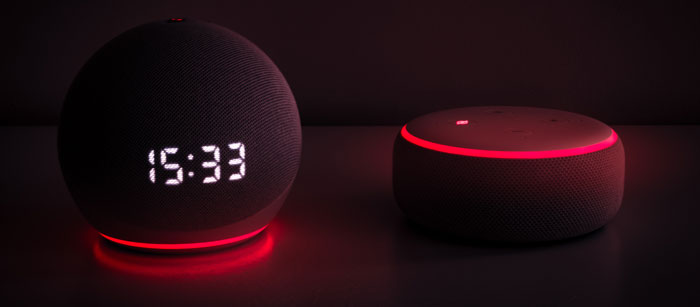
As the internet grows and changes, the popularity of voice search continues to rise through Amazon Alexa style devices and “Hey Siri” requests. And, with the increasing popularity of Internet of Things (IoT) devices, such as smart speakers, this trend doesn’t show any signs of decline. This is not a trend to ignore: optimising your business for voice search will help with every aspect of your overall SEO. Click here to find out more about what steps to take for voice search optimisation.
You may not realise, but many websites that you visit are actually using PWA technologies to provide an experience closer to that of native applications. You can see this when you visit sites like Twitter, Gmail, etc.
Progressive web apps are essentially web applications that feel and function like a native mobile application. This means they increase the quality of user-experience by offering advantages such as offline use, hardware access, push notifications, and the ability to be “installed” on the user’s device. While these clever web apps have been on the increase for a while, their popularity shows no sign of slowing down. Click here to read more about progressive web apps.
Single Page Applications (SPAs) are a key cause of our constant scrolling habits. SPAs work inside a browser to offer seamless user-experience by dynamically loading as a single page. This way the user does not have to wait for the site to continually reload, and can enjoy uninterrupted scrolling. They can offer better page performance, data protection, and work efficiently if the user has poor internet connection, as the content loads completely at the first sign of communication with the server.
Single-page websites (SPWs) work in much the same way. Website content, such as that which might otherwise be found under a “Work” or “About” tab, is fully loaded on the initial page and can be navigated by links within the one page. These intuitive and well-structured single-page websites increase the likelihood of maintaining the attention of users, and enable control of the order in which information is absorbed. Compared to multi-page sites, the site design and development requires less time and money and is more suited to optimisation for mobile devices.
Smart Content refers to the dynamic elements of your website that change depending on the site user profile. It targets individual customers with a personalised experience, and also decreases site loading times to drive significantly higher conversion rates and ROI. Read more about Smart content loading in our blog.

The green transition is here, and, with the internet as a major producer of carbon emissions, web developers have an important role to play. From sustainable web design, to efficient web development, to green hosting, there are many things website creators can and should be doing where possible. As awareness grows about the need for online business that cares for people and planet, and creative solutions increase, we expect sustainable web development practices to continue to grow.
One of the less sexy elements, but for any company that has ever experienced a cyber attack first-hand, online security has always been extremely important.
During 2022 we saw an increase in large-scale nation-state cyber-attacks, such as the Russian attacks against Ukraine and Montenegro and the unidentified attack on the New Zealand government. In 2023 businesses should expect attacks of this kind and scale to become more common and sophisticated. Some of the more pessimistic members of our team would not be surprised to a government body or key public services (or comparable body) is brought down due to a cyber attack.
These security concerns are not just reserved for large corporations. In 2022 research by the world economic forum found that 95% of cyber security issues were caused by human error or a lack of cyber security concerns. Website and Web applications process a lot of valuable data, and with more company assets moving to the cloud to accommodate hybrid/remote working, the potential damage caused by cyber-attacks has never been higher.
Many of the trends we see for 2023 are very similar to those we saw in 2022. Will 2023 be the year that web3 finally kicks off? or the year that there is a considerable push on hardware that supports ARs, making it an essential part of our daily lives? Only time will tell!
One thing is certain. However, companies that provide clients and customers with the best user experience will thrive in 2023. There is a lot of new exciting technology out there that is easy to get excited about, but there is no magic bean this year that will separate the pack. Companies that take the time to understand their customers and demographics and tailor their website and online marketing to utilise the above tools (motion UI, smart content, PWAs, AR etc) correctly will come out on top.
Discover how our team can help you on your journey.
Talk to us today